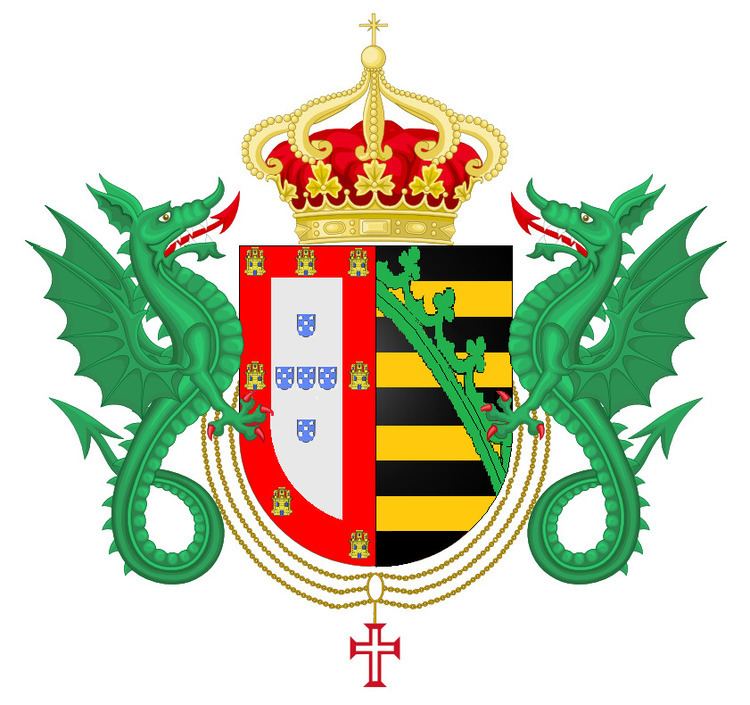Founded 9 April 1836 | ||
 | ||
Titles King of PortugalKing of the AlgarvePrince Royal of PortugalPrince of BeiraPrince of Saxe-Coburg and GothaInfante of PortugalDuke of BraganzaDuke of GuimarãesDuke of BarcelosDuke of PortoDuke of BejaDuke of CoimbraDuke of SaxonyMarquis of Vila ViçosaCount of GuimarãesCount of BarcelosCount of ArraiolosCount of OurémCount of Neiva Dissolution 2 July 1932 (death of Manuel II) | ||
The House of Braganza-Saxe-Coburg and Gotha (also known as the House of Coburg-Braganza) is a term used to categorize the last four rulers of the Kingdom of Portugal, and their families, from 1853 until the declaration of the republic in 1910. Its name derives from the four kings descended in a patrilineal line from King Ferdinand II of Portugal (of the House of Saxe-Coburg and Gotha) and in a matrilineal line from Queen Maria II of Portugal (of the House of Braganza).
Contents
The designation Braganza-Saxe-Coburg and Gotha is prevalent mainly in the writings of non-Portuguese historians and genealogists, as European custom classifies a descendant branch on the basis of patrilineal descent, which means that the House of Braganza-Saxe-Coburg and Gotha is a cadet branch of the House of Saxe-Coburg and Gotha.
Nonetheless, the 1838 Portuguese constitution stated that the House of Braganza was the ruling house of Portugal, by way of Queen Maria II, and her descendants still continued to style themselves as members of the House of Braganza, as opposed to Saxe-Coburg-Gotha-Braganza. The house is extinct.
History
The royal house was founded by Prince Ferdinand of Saxe-Coburg-Gotha and Koháry who on 9 April 1836 married Queen Maria II of Portugal from the House of Braganza. Members of the royal house held the title Infante (or Infanta) of Portugal and Duke (or Duchess) of Saxony. On 15 November 1853, Queen Maria II died, and her eldest son succeeded to the throne as Pedro V, the first king of the Braganza-Saxe-Coburg and Gotha dynasty.
The dynasty remained on the throne until the outbreak in Portugal of the 5 October 1910 revolution when King Manuel II of Portugal was deposed and the Portuguese First Republic was established. Manuel II went into exile in Fulwell Park, England, and, with his death on 2 July 1932, the House of Braganza-Saxe-Coburg and Gotha became extinct.
Modern claims
Before his death in 1932, King Manuel II had been in negotiations with the rival Miguelist branch of the House of Braganza, who had claimed the Portuguese throne since 1834, in opposition to the Braganza-Saxe-Coburg and Gotha dynasty. On the King's death, the claim to the exctinct throne of Portugal passed to Duarte Nuno, Duke of Braganza.
In 1932, a woman, calling herself Maria Pia de Saxe-Coburgo e Bragança, claimed to be the illegitimate daughter of King Carlos I of Portugal and claimed the right to the titles of Duchess of Braganza and to be the rightful Queen of Portugal. Maria Pia claimed that King Carlos I legitimized her through a royal decree and placed her in the line of succession, however no proof was presented to demonstrate this and the King similarly did not have the personal authority to do so. Maria Pia's paternity was never proven and her claim not widely accepted.
